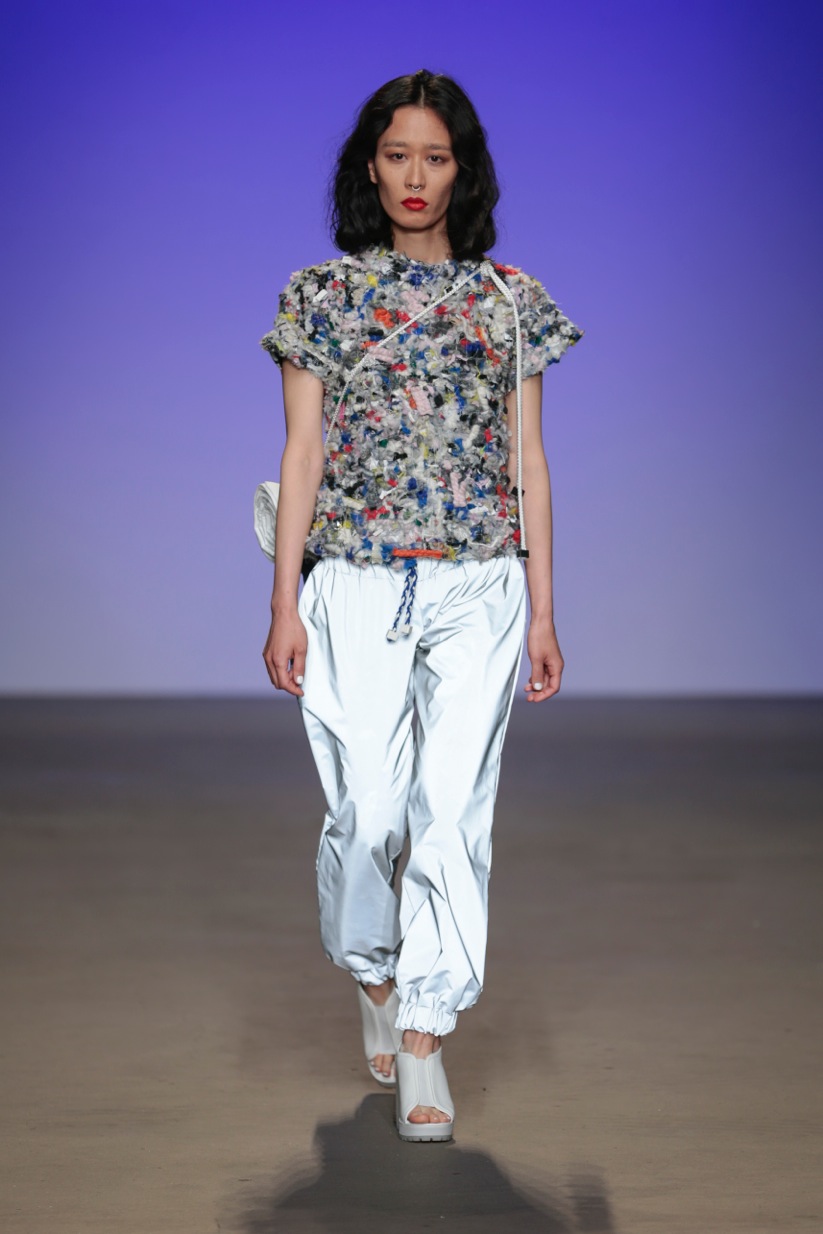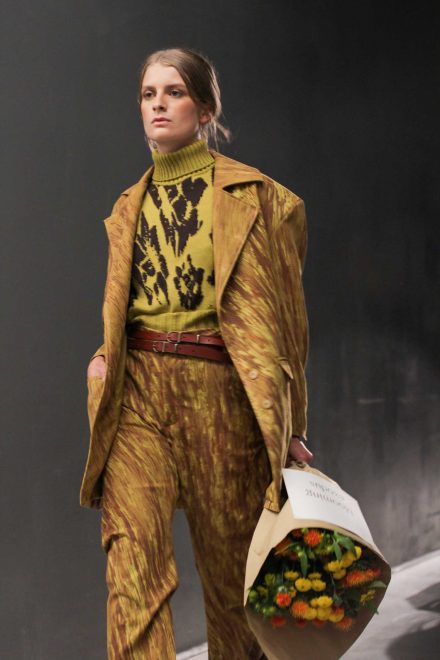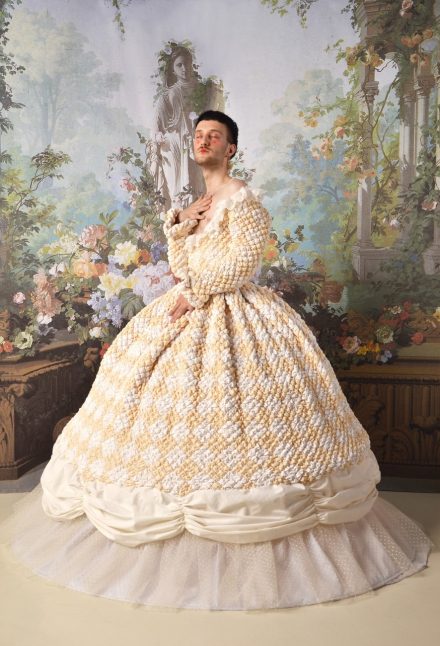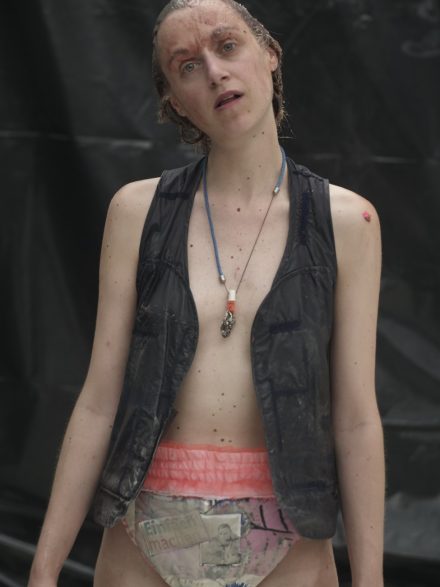
Flashback Fashion Week. While the Πteam kept an eye on Berlin Fashion Week, another invitation had arrived from abroad. Weeks ago, when the creative scene in Berlin gathered to be inspired and to discover new talents, a small crowd of talented designers at Amsterdam Fashion Week alerted our radar. Besides some annual favorites, such as Dutch designer Marga Weimans and Non by Kim, it was the young and up-and-coming designer Verena Michels, who left the strongest impression.
Based in Berlin, the German designer took a chance and showed her very first collection “Trümmerfrauen” –a word for women who helped clear and reconstruct the bombed cities of Germany in the aftermath of WWII — at Fashion Week in Amsterdam, where Michels studied fashion design and graduated in 2013.
The young designer stood out with a conceptual, yet wearable women’s wear collection. In an unusual, but interesting manner, the designer started her show by turning the catwalk into a performance piece. The audience was introduced to a healthy mix of must-haves and couture pieces, while discovering the designer’s true love and passion for material and detail. For the collection, Michels developed a unique fabric processing technique to create visually fragmented knits; a process that creates less waste materials than other techniques and fabrics.


The collection was a hymn of contrasting elements and contradictions. Strong, bold, and beautiful women carried empowering quotes, while simultaneously referencing the suffering and broken spirits of the people who endured the war. The designer beautifully translated her concept by focusing on models with character and introducing different design languages. On the catwalk soft pastel colours met daring tones and understated design met extreme silhouettes. So what is left? A beautiful design formation wanting to be seen, screaming for attention in eloquent form. Sounds like true art to me.

The designer was on hand to discuss her work and answer some of our questions.
Tell us about your collection and how did you come up with such a strong but complex concept; one that is historical/ political relevant? What is your relationship to it as a person and designer?
The collection “Trümmerfrauen” draws a line between German postwar society and the reality I live in myself. The years after WWII were characterised by hardship and poverty, which the women of the shreds turned into creative and innovative clothing choices. Today I feel that consumption often replaces originality and marketing overshadows authenticity. I mentally took on the mindset of a Trümmerfrau, in order to create garments for people who have their own will and look for raw aesthetics.

Why did you choose to introduce a critical statement within your work rather than focusing just on material and aesthetics? I think that enough fashion and material exists already. Especially young designers need to make an effort to add content to the visual landscape. I think that an idea can be more powerful than an image. Best if both elements enhance each other!
Also you opened your show with a performance. What are you aiming for and how do you relate to performance art? Do you see fashion design and performance art connect?
I call the people in my show performers, not models. I always look for somebody with a strong personality and courage rather than catwalk training experience. Antonia is one of them and she read aloud a postwar poem by Gunter Eich that was printed on her outfit as well. While she talked, there was silence and no music- she was the music and added her own rhythm. The last model was carrying a bag with another quote by Gunter Eich: “Be sand, not oil in the machinery of the world.” A show should not be a spectacle alone, but confrontation and pleasure at the same time.

To me your material was truly interesting, what is the story behind it?
The material is mainly wool that I bought for discount from bankrupt companies. This means that I buy good quality, but have a limited choice in colors for example. The stock is temporary and when it’s sold, it’s gone. This limitation triggers interesting choices in my work.
The women embodying your fashion seem broken but strong to me. How do you translate this information into a wearable collection?
Trümmerfrauen were women who had to work hard out of necessity. Their clothes were work wear and leisure wear and evening wear at the same time. My collection includes all of it; leather aprons to be outgoing, wool dresses for work or leisure, extravagant jogging pants to be active in the city. My woman wants to be flexible. The clothes support that idea and make it exciting at the same time.
Will we see more of you and is there another collection to be expected in the future?
I would like to produce a very limited selection of items from this collection as a next step. Sweaters are my priority, in different qualities of wool and in high and low budget editions. The next collection would be a continuation of the existing research and go even more in depth, not be totally different. I believe in what I have already and not in unnecessary changes.




Photography: Elina Abdrakhmanova (backstage photography) , Team Peter Stigter (catwalk photography)




